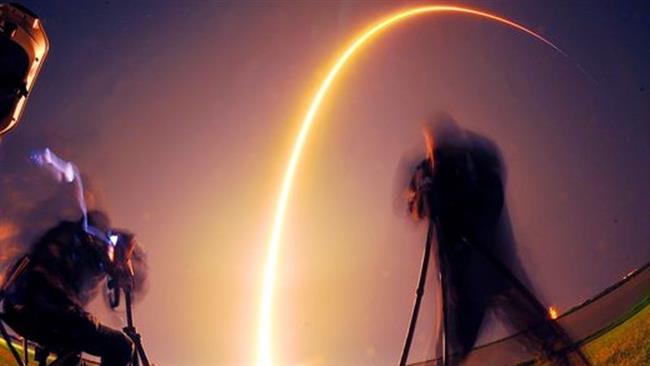-
Tips for becoming a good boxer - November 6, 2020
-
7 expert tips for making your hens night a memorable one - November 6, 2020
-
5 reasons to host your Christmas party on a cruise boat - November 6, 2020
-
What to do when you’re charged with a crime - November 6, 2020
-
Should you get one or multiple dogs? Here’s all you need to know - November 3, 2020
-
A Guide: How to Build Your Very Own Magic Mirror - February 14, 2019
-
Our Top Inspirational Baseball Stars - November 24, 2018
-
Five Tech Tools That Will Help You Turn Your Blog into a Business - November 24, 2018
-
How to Indulge on Vacation without Expanding Your Waist - November 9, 2018
-
5 Strategies for Businesses to Appeal to Today’s Increasingly Mobile-Crazed Customers - November 9, 2018
SpaceX completes hard barge landing for second time
Credit: SpaceXThe Falcon 9 rocket’s first stage booster sits on the drone ship in the Atlantic Ocean.
Advertisement
Entrepreneur Elon Musk created SpaceX – or Space Exploration Technologies – as a launch service that would be able to offer much lower rates than competitors with the simple sounding yet hard to achieve strategy of reusing the rockets.
As reported in Deutsche Welle, the success of the JCSAT-14 was anything but a sure thing, and the SpaceX Falcon 9 rocket carried minimal fuel levels as a precaution.
SpaceX has been a trailblazer when it comes to reusable rocket technology, and the company was able to reach another milestone in that pursuit, landing one of its Falcon-9 rockets at sea after launching for the second time ever. The company’s Falcon 9 blasted off from Cape Canaveral at 1.22am EST on Friday to throw a communications satellite into orbit, then made a quick return, landing on an autonomous drone ship.
Elon Musk was jubilant after the successful SpaceX rocket launch and took to social media.
Elon Musk is, in fact, a betting man, but his gambles are backed by the calculations of SpaceX’s rocket scientists.
The landing is a significant breakthrough in SpaceX’s efforts to recover and reuse rockets, a capability the company believes will dramatically lower launch costs. He gambled that the Falcon 9 could successfully launch from Cape Canaveral this morning. The aerospace company plans several more satellite delivery launches this year with a growing client list that even includes NASA.
Musk succinctly tweeted, “Woohoo!”and followed up shortly thereafter with the more elaborative, “Yeah, this was a three engine landing burn, so triple deceleration of last flight”.
Employees gathered at SpaceX’s headquarters near Los Angeles erupted in cheers of “U.S.A!”
Advertisement
The main objective of the mission was to deliver a commercial communications satellite called JCSAT-14 to a Geostationary Transfer Orbit (GTO), which was used to move a satellite into a geostationary orbit about 36,000 kilometers over the equator.





























